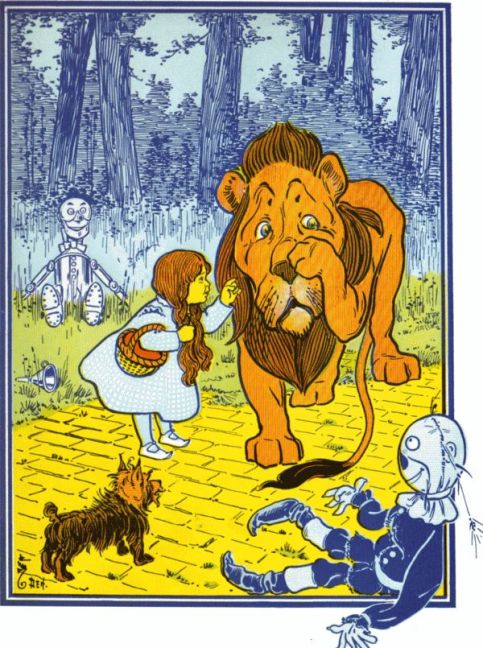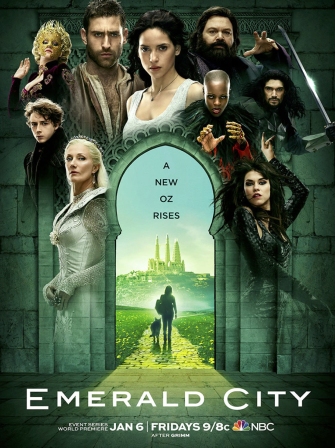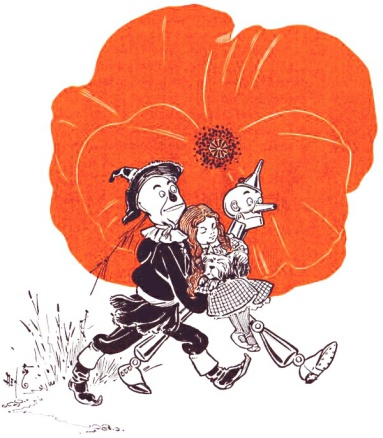
We’re not in Kansas anymore. Unfortunately, it doesn’t look much like Oz either.
I have a bone to pick with Hollywood, and it’s one we’ve all been choking on the last ten years or so. Namely, I mean Hollywood’s recent fascination with adulterating the land of Oz.
Hardly a soul exists that hasn’t seen the 1939 MGM film The Wizard of Oz, a timeless classic which has lived on through countless TV specials, theatrical re-releases, and home video or disc formats. Its iconic, technicolor imagery has become a staple of our culture: Judy Garland’s blue dress, the yellow brick road, the sparkling red slippers, and the Witch’s green scowl, which has haunted the nightmares of countless kids (including myself).
But there is an alarming number of souls who are unexposed to, or worse, entirely unfamiliar with the book which first gave us this place over the rainbow.
In 1900, American author L. Frank Baum published The Wonderful Wizard of Oz, a story about a little farm girl who is whisked away by a cyclone into a magical land called “Oz.” In it, she meets a band of whimsical characters who accompany her on her journey to the Emerald City, ruled by a mysterious wizard who can help her get home. Baum’s aim was simple: to make a modern fairy tale which eliminated the genre’s usual gruesome elements (those from the Disney school of fairy tales ought to see their animated favorites as told by Grimm or Anderson…they will be sleeping with the lights on). In the words of Baum himself:
…The time has come for a series of newer “wonder tales” in which the stereotyped genie, dwarf and fairy are eliminated, together with all the horrible, gory and blood-curdling incident devised by their authors to point a fearsome moral to each tale … the story of “The Wonderful Wizard of Oz” was written solely to pleasure children of today. It aspires to being a modernized fairy tale, in which the wonderment and joy are retained and the tragic heart-aches and nightmares are left out.
Baum’s book sought to entertain children without scaring them to death; to teach them the values of friendship, selflessness, and bravery without terrifying them into submission. It soared in popularity, capturing the imaginations of kids around the world and becoming the first American fairy tale. It’s no wonder The Wonderful Wizard of Oz remains a beloved hallmark in American literature.
It’s also no wonder Hollywood wants to capitalize on every cent it can squeeze out of the material.
Nothing is sacred in Tinseltown…and never has this been more apparent than with the multiple reboots, revamps, and revisions of Oz we’ve seen in recent years.
Until the turn of the millennium, there were numerous adaptations for screen and theater which were mostly faithful to Baum’s vision. Then, out of the sky like a falling house came Wicked, the Broadway musical based on a novel of the same name. Wicked showed us a different side of Oz, in which the Wicked Witch of the West (Elphaba, as she is named) is portrayed not as an evil villain but a misunderstood outcast. It follows the life of Elphaba before the events of Oz, as she is shaped by a cruel, intolerant society into the cackling crone we all know.
Baum’s simple message was about good and evil; the message of Wicked is that it’s more complicated than that. It seeks to blur the lines of morality in a manner consistent with our postmodern age and the rise of relativism, and challenges our traditional notions of “evil.” Essentially, it asks us to sympathize with the bad guy. I saw Wicked at the Pantages Theater some years back and did enjoy it; younger audiences, though, will be perplexed to find their light fantasy turned into a dense social commentary. The film adaptation will likely be the same.
Disney’s Oz the Great and Powerful told its own origin story, this one about the Wizard. With it’s $215 million budget and glut of computer effects and green screen, it left me wondering how the 1939 version was able to convey more magic and charm with its simple painted backdrops. In the titular role is James Franco, who’s laid-back, cocksure demeanor might appeal to teen girls but is completely out of place here. Also miscast is attractive young starlet Mila Kunis as the Wicked Witch, sporting sleek black dress, green cleavage, twice the make-up and half the screen presence of her 1939 predecessor. The result is a technically lavish piece of eye-candy with a hollow center.
Television jumped on the bandwagon with 2007’s Tin Man, a grim science-fiction makeover of Oz complete with androids, cyborgs, telepathic beings and a Tin Man who isn’t made out of tin. In the role of Dorothy Gale is Zooey Deschanel (“D.G.”, as she’s called) trading in farm dress for a leather jacket. This bleak trip over the rainbow is about as colorful as Dorothy’s gray-scale home in Kansas, and is more akin to Blade Runner than anything from Baum’s book.
TV’s latest excursion down the yellow brick road is Emerald City, which the NBC website describes thus:
“…20-year-old Dorothy Gale and a K9 police dog are swept into a world far removed from our own – a mystical land of competing realms, lethal warriors, dark magic, and a bloody battle for supremacy …

Airing next year, the trailer promises an “Oz” unlike anything we’ve ever seen…except for a million times in Game of Thrones. We get snippets of characters including battle-scarred warriors, scantily-clad witches, and our “Scarecrow”…a bloody man hanging by barbed wire on a crucifix.
Yet the trailer hints that Dorothy’s ultimate goal, like the book, is to get home…because there’s no place like the K-9 Unit.
Stop it Hollywood. Stop it TV executives. Just stop. Why must you take something so pure and desecrate it? Why take such a gentle, sweet fable and go out of your way to make it so brutal and ugly? Why draw an audience with the name Wizard of Oz if you’re going to take out everything that makes it the Wizard of Oz? L. Frank Baum said “To please a child is a sweet and lovely thing.” How pleased would our five-year-olds be to see how you’ve turned little Dorothy into Katniss Everdeen from The Hunger Games? How enchanted would they be with your flesh-and-blood “Tin Man” drawing pistols like Dirty Harry? In your quest to update Baum’s tale for a new generation, you’ve made an “Oz” that’s hipper, sexier, and more bad ass, and in the process stripped it of it’s innocence and heart. In short, you’ve successfully reshaped Oz in your image…and it isn’t a pretty sight.
In pandering to grown-ups, you’ve forgotten who these stories really belong to. They weren’t created for fanboys, comic book nerds, or the theater elite; they were made for kids. They are parables about the joy and wonder of childhood, and do not lend themselves to being shoehorned to fit our darker, more cynical tastes.
Perhaps out of unspoken fear of touching one of Hollywood’s most adored classics, they play it safe with contrived prequels and spin-offs. I would submit that it is entirely possible to put a faithful retelling of the book to screen in a way that is new, fresh, and does not trample on the original. To do this would require three fitting ingredients: the heart to want to please children first and foremost; the brains to know the indispensable elements that make this story worth telling; and the courage to trust the source material.
Besides, being so desperate for new Oz material, do these studios not realize Baum wrote thirteen sequels to his original book? They have enough original, untouched canon to keep busy for at least the next quarter century.

If all else fails, we still have the book…pure, unadulterated, fantastic. I’ve had the pleasure of reading it as well as it’s sequel The Marvelous Land of Oz, and I testify that they’re as fun as anything from the Harry Potter series. I will be reading them to my kids one day, and hope more parents will rediscover these buried gems for their kiddos as well.
C.S. Lewis said “A children’s story that can only be enjoyed by children is not a good children’s story in the slightest.” I said earlier that Oz books are for kids, but that was incomplete…they are for the kid at heart.
I am hopeful that filmmakers will soon realize this, and see that some oft-traveled roads needn’t be repaved…especially ones made of yellow brick.